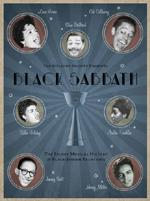You Don't Have to Be Jewish (But it Helps)
The relationship between Jewish-Americans and African Americans has been long, complicated, confusing, controversial and not without reciprocal animosity. Yet, clearly as this fascinating collection of African-American artists singing Jewish songs demonstrates, there’s also been a lot of mutual love and support.
Did the Chess brothers exploit the talent they recorded? Probably. But would the talent have been otherwise recorded effectively marketed and distributed? Probably not. The exploitation wasn’t limited to Jews. Ahmet Ertegun was equally charged and he was a Turkish Muslim.
Depending upon your perspective, this slyly titled collection of Jewish songs sung by African-American artists either exemplifies the mutual love or the exploitation. Or perhaps both!
You’ll have to judge for yourself if you pick up this fascinating collection assembled by The Idelsohn Society for Musical Preservation, a non-profit driven by the belief that music best tells Jewish history (www.idelsohnsociety.com). The URL is misspelled in the CD insert card.
Included is Billie Holiday singing “My Yiddishe Momme,” Eartha Kitt doing “Sholem,” Cab Calloway’s “Utt Da Zay” (Cab’s whole style was very “Cantor”-y. There’s a “Fiddler on the Roof” medley by The Temptations, Johnny Mathis’s amazing “Kol Nidre” (a declaration recited before day or atonement services), and tunes by Nina Simone, Aretha Franklin, Jimmy Scott, Johnny Hartman and others.
Some are very secular, some are religious and some are here for reasons I can’t fathom and there are no liner notes to explain them. For instance, Johnny Hartman sings “That Old Black Magic” and Aretha Franklin sings “Swanee.” Okay, Harold Arlen (born Hyman Arluck) was Jewish and “Swanee,” written by George Gershwin and Irving Caesar, was popularized by Al Jolson, but on that basis hundreds of songs could be here!
Lena Horne’s “Now!” best epitomizes the connection. It’s a song about black equality set to “Hava Nagila.” The lyrics are insistent, even militant (“say goodbye to Uncle Thomas) and reference the Constitution. There’s also “Since they all say we got rhythm, let’s share our rhythm with ‘em.” (!)
My favorite, though is Slim Gaillard Quartet’s “Dunkin’ Bagel,” which clearly preceded Dunkin Donuts’ selling bagels! Nina Simone’s live “Eretz Zavat Chalav” performed at Carnegie Hall in 1963 is particularly heartfelt. It’s an Israeli folk dance that she sang there on the day Martin Luther King was jailed in Birmingham, Alabama. You can see it here:http://www.idelsohnsociety.com/blacksabbath/nina-simone-–-“eretz-zavat-chalav”/
How did Johnny Mathis come to record “Kol Nidre?”
“When I was growing up in San Francisco as a teenager, I would visit temple with some of my Jewish friends and I loved to listen to the cantors,” says Johnny Mathis, whose version of “Kol Nidre” is featured on the compilation. “They helped me learn these songs long before I recorded them.” Paul Robeson, no stranger to either repertoire, put it this way: “If it had been true that the Jewish people, like so many other national groups for whom I have sung, have warmly understood the loved songs of my people, it has also been true that Negro audiences have been moved by the songs of the Jewish people.”
As the old Levy’s Jewish Rye Bread commercial slogan said “You don’t have to be Jewish” to appreciate this, but unlike Rye bread, you probably should be!
- Log in or register to post comments


